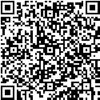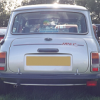Headlight switch
#1

Posted 30 April 2007 - 09:47 PM
Post here http://www.theminifo...eadlight switch
I need to fit a relay for my main head lights but I am not sure how to wire it what colours connect to what and where to get the relay. Would someone be able to help.
Thanks
Zeroasylum
#2

Posted 01 May 2007 - 10:22 AM
#3

Posted 01 May 2007 - 11:12 AM
However, to get round the issue you need to isolate the Dipped beam circuit... and would recommend you do the Main beam circuit aswell..
The wires you need to intercept are Blue/Red for Dipped beam, and Blue/White for main beam... (if you locate them in the engine bay around the bulkhead then you'll have somewhere to attach the relays)
The relays should be wired to a permanent 12v feed and with a line fuse of 10A which should be enough for the 55/60W std H4 halogen bulbs...
#4

Posted 01 May 2007 - 06:14 PM
Worry not young Clubby, I am here.
What do you need to turn your lights on for anyway? It's mid summer!
Since you say you don't have much experience with electrics, it's probably best to get two of the pre-wired relay and fuse kits that can be bought from places like Halfords. While you're there get some electrical tape, some cable ties, some blue sleeved 8mm ring / eyelet type crimp terminals and some male and female bullet type crimp terminals (Blue or yellow sleeved is you're getting the pre-insulated type, red would be OK but blue is best). You said you've done some crimping so I assume you have a crimp tool and can at least cut and strip a wire and crimp a fitting on.
Almost all the connections you are going to need already exist behind the slam panel, where the two headlamp assemblies are joined into the main loom using bullet connectors (he says, hoping that Clubman is the same as Mini in this department). These look like little rubber bricks.
Disconnect the battery earth cable from the battery, and put the carboard cover back with the cable outside it so it can't fall back onto the battery.
Find somewhere to mount the two relays, like on the drivers side inner wing and bolt the two relays in place. If you can use holes that already exist then that would be best but if you really need to drill some, make sure you paint the edges of the cut with some touch up stick. With the relays mounted and the fuse holders arranged so that you can get to them, you're going to start laying out the cables. Work with one set at a time so you don't get confused. Take three of the four cables from one relay and lay the wires along the wing and up to the bullet connectors, following the route of the existing harness. Whatever colour the cable is that the instructions tell you is from pin 30 on the relay (probably red) is going to run straight down the wing with the other cables that run to the starter solenoid, the other three to the front panel. When you know how long each cable needs to be and you have got them running a tidy route, cut them to length but don't tie them into anything yet. The pin 30 cable running to the solenoid needs one of the 8mm eyelet connectors fitted to it. The pin 85 cable needs a female bullet connector fitted to it and the pin 87 cable needs a male bullet. Leave the pin 86 wire for now.
Determine which of the bullet packs has blue/red cables running to it. This is the dipped headlamp connector. Determine which of the cables from this connector is coming out of the main harness rather than one of the lamp cluster harnesses and remove this cable from the connector. This is going to be the signal cable which triggers the relay, it comes directly from the dip switch in the steering column. If the cable pulls out and it's bullet has fallen off, don't panic they do that as they get brittle with corrosion. Put a new bullet on it and join it to the cable from pin 85 of the relay. Wrap this joint in some tape, three wraps is enough. Push the bullet on the wire from pin 87 of the relay into an empty space in the multi bullet connector so that it joins to the two headlamp cluster loom dipped beam cables. Make sure it clicks into place.
Now do the whole thing again with the other relay, using the connector block with blue/white cables. This is the high beam connector.
Now you should be left with the two pin 86 cables which hopefully should be black. Join both of these by crimping them into a single male bullet connector and click that into the multi bullet block with black wires in the slam panel bundle. A bit of tape around the two just up from the connector will stop one being pulled away from the other which is a good thing to do when they are crimped together like this.
All that remains now should be the two ring terminals by the starter solenoid. Identify which terminal on the solenoid is connected directly to the battery and remove the nut from it, slip the rings over the top and re tighten the nut.
The kits should have blade fuse holder already fitted into them. If you have to fit them yourself, they need to go inline in these last cables fitted to the solenoid. They probably come with 15 amp blades. You should switch these for 10 amp blades. If they are glass cartridge fuse holders they need to be 25 amp cartridge fuses.
You should now have a nice tidy installation with the minimum of butchery to the car's original electrics and which can easily be removed if you ever need. Re-connect the battery earth and see whether the lights work in both high and low beam.
If everything is working, tape all your new cables up into a tidy auxiliary harness and cable tie the new harness on to the outside of the existing harness to keep it all tidy.
If it doesn't work, come back and tell us.
Dipped beam
30 = Red run to the starter solenoid with 10amp fuse
85 = Signal cable, which triggers the relay: blue/red cables, dipped headlamps
86 = Multi bullet block with black wires
87 = Joins to the two-headlamp cluster loom dipped beam cables
High beam
30 = Red run to the starter solenoid with 10amp fuse
85 = Signal cable, which triggers the relay: blue/white cables, High beam
86 = Multi bullet block with black wires
87 = Joins to the two-headlamp cluster loom high beam cables
#5

Posted 06 May 2007 - 02:14 PM
And for how to wire up the relays...
Worry not young Clubby, I am here.
What do you need to turn your lights on for anyway? It's mid summer!
Since you say you don't have much experience with electrics, it's probably best to get two of the pre-wired relay and fuse kits that can be bought from places like Halfords. While you're there get some electrical tape, some cable ties, some blue sleeved 8mm ring / eyelet type crimp terminals and some male and female bullet type crimp terminals (Blue or yellow sleeved is you're getting the pre-insulated type, red would be OK but blue is best). You said you've done some crimping so I assume you have a crimp tool and can at least cut and strip a wire and crimp a fitting on.
Almost all the connections you are going to need already exist behind the slam panel, where the two headlamp assemblies are joined into the main loom using bullet connectors (he says, hoping that Clubman is the same as Mini in this department). These look like little rubber bricks.
Disconnect the battery earth cable from the battery, and put the carboard cover back with the cable outside it so it can't fall back onto the battery.
Find somewhere to mount the two relays, like on the drivers side inner wing and bolt the two relays in place. If you can use holes that already exist then that would be best but if you really need to drill some, make sure you paint the edges of the cut with some touch up stick. With the relays mounted and the fuse holders arranged so that you can get to them, you're going to start laying out the cables. Work with one set at a time so you don't get confused. Take three of the four cables from one relay and lay the wires along the wing and up to the bullet connectors, following the route of the existing harness. Whatever colour the cable is that the instructions tell you is from pin 30 on the relay (probably red) is going to run straight down the wing with the other cables that run to the starter solenoid, the other three to the front panel. When you know how long each cable needs to be and you have got them running a tidy route, cut them to length but don't tie them into anything yet. The pin 30 cable running to the solenoid needs one of the 8mm eyelet connectors fitted to it. The pin 85 cable needs a female bullet connector fitted to it and the pin 87 cable needs a male bullet. Leave the pin 86 wire for now.
Determine which of the bullet packs has blue/red cables running to it. This is the dipped headlamp connector. Determine which of the cables from this connector is coming out of the main harness rather than one of the lamp cluster harnesses and remove this cable from the connector. This is going to be the signal cable which triggers the relay, it comes directly from the dip switch in the steering column. If the cable pulls out and it's bullet has fallen off, don't panic they do that as they get brittle with corrosion. Put a new bullet on it and join it to the cable from pin 85 of the relay. Wrap this joint in some tape, three wraps is enough. Push the bullet on the wire from pin 87 of the relay into an empty space in the multi bullet connector so that it joins to the two headlamp cluster loom dipped beam cables. Make sure it clicks into place.
Now do the whole thing again with the other relay, using the connector block with blue/white cables. This is the high beam connector.
Now you should be left with the two pin 86 cables which hopefully should be black. Join both of these by crimping them into a single male bullet connector and click that into the multi bullet block with black wires in the slam panel bundle. A bit of tape around the two just up from the connector will stop one being pulled away from the other which is a good thing to do when they are crimped together like this.
All that remains now should be the two ring terminals by the starter solenoid. Identify which terminal on the solenoid is connected directly to the battery and remove the nut from it, slip the rings over the top and re tighten the nut.
The kits should have blade fuse holder already fitted into them. If you have to fit them yourself, they need to go inline in these last cables fitted to the solenoid. They probably come with 15 amp blades. You should switch these for 10 amp blades. If they are glass cartridge fuse holders they need to be 25 amp cartridge fuses.
You should now have a nice tidy installation with the minimum of butchery to the car's original electrics and which can easily be removed if you ever need. Re-connect the battery earth and see whether the lights work in both high and low beam.
If everything is working, tape all your new cables up into a tidy auxiliary harness and cable tie the new harness on to the outside of the existing harness to keep it all tidy.
If it doesn't work, come back and tell us.
Dipped beam
30 = Red run to the starter solenoid with 10amp fuse
85 = Signal cable, which triggers the relay: blue/red cables, dipped headlamps
86 = Multi bullet block with black wires
87 = Joins to the two-headlamp cluster loom dipped beam cables
High beam
30 = Red run to the starter solenoid with 10amp fuse
85 = Signal cable, which triggers the relay: blue/white cables, High beam
86 = Multi bullet block with black wires
87 = Joins to the two-headlamp cluster loom high beam cables
Please help I don’t know whats wrong. I wired up the dip beam as you said took the power from the starter solenoid and now the car wont start. I disconnected everything and tried again but will not start. What happens is the following. I turn the ignition switch to point one everything is fine and my volt meter registers 12 volts. Second point red and orange lights come on dash and all is good. When I get to the third point to crank the starter motor the volt meter drops to zero. What have I done wrong? Have I blown the solenoid or disconnected a cable and not re connected it please help.
Thanks
Zeroasylum
#6

Posted 06 May 2007 - 03:34 PM
ZeroAsyluym
1 user(s) are reading this topic
0 members, 1 guests, 0 anonymous users
















